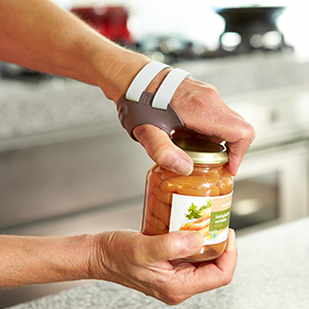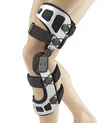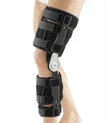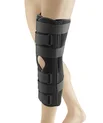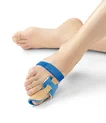Orthoses are orthopaedic tools that aim to restore or secure the position of certain parts of the body. They are often used following accidents, surgery, or for inherent misalignment or age-related deterioration. Orthoses take the form of a splint made from plastic or similar stable materials to ensure that joints are controlled and stabilised.
They are very similar to orthopaedic supports in terms of their mechanical mode of action. There are differences, however. For instance, while orthopaedic supports enable the affected person to be mobile as much as possible, orthoses are made from rigid materials so that movement is restricted or prevented in specific areas.
Mode of action in Orthoses
Imagine a roller-coaster where the cars represent human joints and the rails represent orthoses. The curves of the roller-coaster symbolise the scope of movement in the joints. Essentially, the cars are held in place on the rails using orthoses.
One orthosis for the wrist is designed using this concept; it is a splint which rests in the palm of the hand and brings the wrist to a neutral position. This ensures optimal blood flow in this area and makes the immobilisation of the wrist as comfortable as possible. This orthosis is used after post-surgery measures have been taken and also in cases of acute and chronic inflammation/excessive load in the area of the thumb and forearm, or severe sprains in the wrist.
Depending on the symptoms, there are also types of orthoses that can be disabled during the healing process to allow a slow restoration of mobility in gradual steps. One clear advantage of an orthosis over a cast in the healing process is that an orthosis can be removed for cleaning. Soft knitted fabric can also be inserted into the structure of the orthosis for additional comfort while wearing it.

